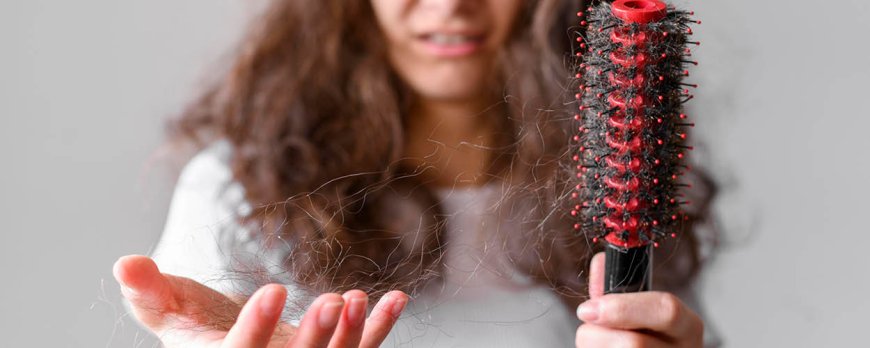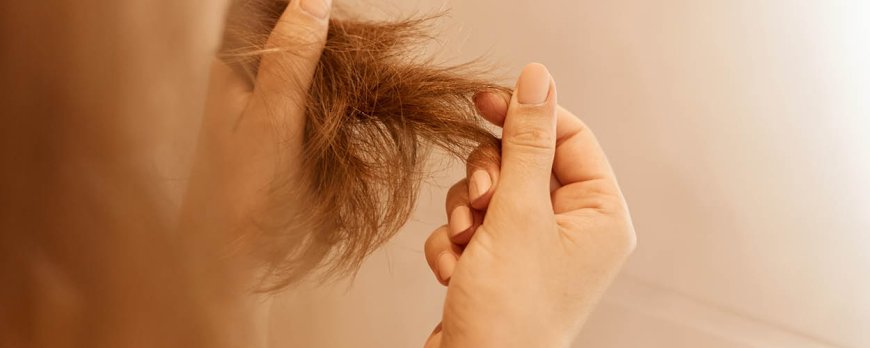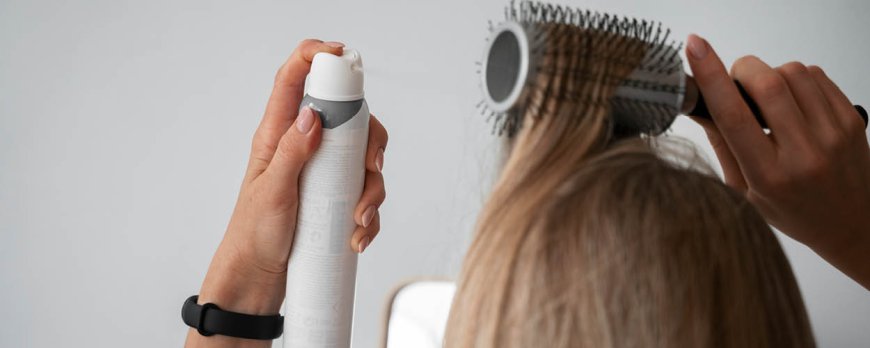Why is my hair getting shorter?
Discover the reasons behind 'Why is my hair getting shorter?' Learn possible causes and effective prevention to maintain your desired hair length.

Why is my hair getting shorter?
Have you been noticing that your hair is getting shorter? There could be several reasons behind this frustrating issue. Changes in curl pattern, damage and breakage, a shorter hair growth cycle, and improving hair health can all contribute to shorter-looking hair. Understanding these factors and taking appropriate measures can help you maintain longer, healthier locks.
Key Takeaways:
- Changes in curl pattern can make hair appear shorter, even though it's the same length.
- Damage and breakage can cause hair to snap and break off, leading to shorter strands.
- A shorter hair growth cycle means less time in the growing phase, resulting in shorter hair.
- Improving hair health, particularly for wavy or curly hair, can result in tighter curls and increased shrinkage, making hair appear shorter.
- Other factors such as sleep positions, natural changes in texture or density, and neglect can also contribute to hair looking shorter in certain spots.
To prevent hair from getting shorter, it's important to take preventive measures. This includes getting regular trims to remove split ends, maintaining the right moisture-protein balance, washing hair less frequently to prevent dryness and breakage, protecting hair at night by using satin or silk pillowcases or scarves, wearing protective styles to minimize friction and manipulation, and reducing heat styling to prevent damage. By understanding the hair growth cycle and implementing proper care, you can promote longer, healthier hair.
Understanding Changes in Curl Pattern
If you've noticed that your hair seems shorter than before, changes in your curl pattern might be to blame. It's important to understand that even though the actual length of your hair remains the same, changes in your curl pattern can make your hair appear shorter.
When your hair goes through changes in curl pattern, it can result in increased shrinkage, where your hair strands appear to be shorter. This is especially true for individuals with wavy or curly hair. As your hair becomes healthier and more hydrated, the curls can tighten, leading to more shrinkage and a shorter overall appearance.
If you're experiencing changes in curl pattern and want to minimize the appearance of shorter hair, here are some tips:
- Moisturize your hair regularly to keep it hydrated and reduce shrinkage.
- Avoid heat styling tools and excessive heat, as it can lead to dryness and further shrinkage.
- Protect your hair at night by using a silk or satin pillowcase or wearing a satin bonnet to prevent friction and breakage.
- Consider using protective styles that stretch your hair, such as braids or twists, to elongate your curls and minimize shrinkage.
It's important to embrace and care for your natural curl pattern, understanding that changes in curl pattern can impact the perceived length of your hair. By following these tips, you can maintain healthy, beautiful curls and minimize the appearance of shorter hair.

Damage and Breakage as Culprits
Damage and breakage can cause your hair to snap and break off, resulting in shorter strands. These issues can be caused by a variety of factors, such as excessive heat styling, chemical treatments, and harsh hair products. To prevent damage and breakage, it's important to adopt proper hair care practices.
Here are some tips to prevent hair breakage and promote length retention:
- Avoid using heat styling tools, such as flat irons and curling irons, too frequently or at high temperatures. Heat can weaken the hair shaft and lead to breakage. If you must use heat, always apply a heat protectant before styling.
- Be gentle when detangling your hair, especially when it's wet, as wet hair is more prone to breakage. Use a wide-toothed comb or your fingers to gently remove knots and tangles.
- Avoid using harsh hair products that contain sulfates or alcohol, as these can strip the hair of its natural oils and make it more prone to breakage. Opt for gentle, sulfate-free shampoos and moisturizing conditioners instead.
- Protect your hair while sleeping by using a satin or silk pillowcase or wearing a satin bonnet or scarf. These materials reduce friction between your hair and the pillow, minimizing breakage.
- Avoid tight hairstyles that pull on your hair, such as braids, ponytails, or buns. These can cause stress and breakage along the hairline and in the areas where the hair is secured.
- Keep your hair moisturized and nourished by using hydrating hair masks, leave-in conditioners, and oils. These products help to strengthen the hair and prevent breakage.
By following these tips and adopting a gentle hair care routine, you can minimize damage and breakage, allowing your hair to grow longer and healthier.
The Role of the Hair Growth Cycle
Did you know that your hair goes through different growth phases, and a shorter growth phase can result in shorter hair overall? Understanding the hair growth cycle is essential for promoting healthy hair and achieving longer lengths naturally.
The hair growth cycle consists of three main phases: the anagen phase, the catagen phase, and the telogen phase. During the anagen phase, which can last anywhere from two to seven years, hair cells actively divide and hair grows at a rate of about half an inch per month. This phase is crucial for achieving length. However, if the anagen phase is shorter than average, it can lead to shorter hair overall.
The catagen phase, also known as the transitional phase, lasts for about two weeks. During this phase, hair growth stops, and the follicle shrinks. Finally, the telogen phase is the resting phase, lasting about three months. During this time, the hair follicle is inactive, and the old hair is pushed out by the new hair growing in the anagen phase.
Several factors can influence the length of each phase in the hair growth cycle. Genetics, hormones, age, and overall health can all impact the duration of the growth phases. Additionally, external factors such as stress, diet, and hair care practices can also affect hair growth. By understanding and supporting the hair growth cycle, you can promote longer, healthier hair.

Improving Hair Health for Longer Locks
To prevent your hair from getting shorter, it's essential to focus on improving overall hair health. By following these tips and practices, you can maintain longer and healthier locks.
Maintain a Proper Moisture-Protein Balance
- Use a moisturizing shampoo and conditioner to keep your hair hydrated and nourished.
- Incorporate deep conditioning treatments into your routine to replenish moisture and strengthen your strands.
- Consider using protein treatments to restore and reinforce the protein structure of your hair.
Reduce Heat Styling and Protect from Damage
- Limit the use of heat styling tools such as flat irons and curling irons, as excessive heat can lead to hair damage and breakage.
- If you must use heat, apply a heat protectant spray beforehand to minimize damage.
- Opt for air-drying or using low-heat settings whenever possible to keep your hair healthy and prevent it from getting shorter.
Protective Styling and Nighttime Care
- Utilize protective styles like braids, twists, or buns to minimize manipulation and protect your hair from environmental stressors.
- When sleeping, use a silk or satin pillowcase or wrap your hair in a silk or satin scarf to reduce friction and prevent breakage.
- Avoid tight hairstyles and elastic bands that can cause tension and lead to hair breakage.
Regular Trims
Contrary to popular belief, getting regular trims can actually help you maintain length in the long run. Trimming your hair every 6-8 weeks helps get rid of split ends and prevents them from traveling up the hair shaft, causing breakage.
By following these practices and taking care of your hair, you can prevent it from getting shorter and promote longer, healthier locks. Remember, consistency is key when it comes to achieving and maintaining your desired hair length.

Other Factors Influencing Hair Length
While it may seem like your hair is getting shorter, there are other factors that can influence the length of your locks. Sleep positions, for example, can contribute to uneven hair length. Sleeping on one side consistently can cause friction and breakage, resulting in shorter strands on that side. To mitigate this, try sleeping on a silk or satin pillowcase, which reduces friction and helps maintain hair length.
Natural changes in texture or density can also affect hair length. As we age, our hair can go through transformations, such as becoming thinner or experiencing changes in curl pattern. Thinner hair strands or tighter curls can give the appearance of shorter hair, even though the actual length remains the same. Embracing these natural changes and adjusting your styling routine can help you work with your hair's new texture or density.
Neglecting your hair care routine can also lead to shorter locks. Skipping regular trims can cause split ends and breakage, resulting in hair that appears shorter. Additionally, not properly moisturizing and protecting your hair can lead to dryness and damage, which can cause breakage and stunted growth. Prioritizing regular trims, maintaining a proper moisture-protein balance, and protecting your hair from environmental stressors can help retain length.
Tips for Length Retention:
- Get regular trims every 6-8 weeks to prevent split ends.
- Maintain a proper moisture-protein balance by using moisturizing and protein-based hair products.
- Wash your hair less frequently to prevent stripping it of its natural oils.
- Protect your hair at night by sleeping on a silk or satin pillowcase or wrapping your hair in a satin scarf.
- Opt for protective styles, such as braids or twists, to minimize manipulation and prevent breakage.
- Avoid excessive heat styling, as it can cause damage and breakage. Use heat protectant sprays when necessary.
By understanding these factors and implementing hair care practices that promote length retention, you can achieve longer, healthier locks. Remember, while it may appear that your hair is getting shorter, it's important to consider these other factors that can influence hair length. With proper care and attention, you can maintain the desired length and overall health of your hair.
Preventive Measures for Longer Hair
If you're determined to maintain the length of your hair, incorporating preventive measures is key. By following these essential tips, you can help minimize damage and promote healthy hair growth, ensuring your locks stay long and beautiful for longer.
- Get regular trims: While it may seem counterintuitive, regular trims actually promote longer hair. Trimming the ends helps get rid of split ends and prevents breakage from traveling up the hair shaft, ultimately preserving the length.
- Maintain the right moisture-protein balance: Keeping your hair properly moisturized and nourished is vital for length retention. Use a moisturizing conditioner and consider incorporating protein treatments to strengthen your strands.
- Wash hair less often: Frequent washing can strip the natural oils from your hair, leading to dryness, breakage, and shorter strands. Try to extend the time between washes and opt for gentle, sulfate-free shampoos.
- Protect hair at night: Sleeping on a satin or silk pillowcase, or using a silk or satin hair wrap or bonnet, can help reduce friction and prevent hair breakage while you sleep.
- Wear protective styles: Braids, twists, buns, and other protective hairstyles can shield your hair from daily manipulation and environmental stressors, minimizing damage and preserving length.
- Avoid heat styling: Excessive heat can weaken the hair shaft and cause breakage. Whenever possible, embrace heat-free styling methods or use heat protectant products when heat styling is necessary.
By incorporating these preventive measures into your hair care routine, you can help safeguard your hair against the factors that contribute to decreased length. Remember, consistency is key, so make these practices a regular part of your hair care regimen for optimal results.

The Importance of Understanding the Hair Growth Cycle
By gaining a deeper understanding of the hair growth cycle, you can take steps to promote optimal hair length. The hair growth cycle consists of three main phases: the anagen, catagen, and telogen phases. During the anagen phase, which lasts an average of two to seven years, the hair follicles actively produce new hair cells. This is when your hair grows the most. The catagen phase is a transitional phase that lasts about two weeks. During this phase, the hair follicles shrink and detach from the blood supply. Finally, the telogen phase is the resting phase that lasts for about three to four months. At the end of this phase, old hair falls out, and the cycle starts all over again.
Understanding this cycle is essential because a shorter anagen phase can result in shorter hair length overall. Certain factors, such as genetics, hormonal changes, stress, diet, and age, can influence the duration of each phase and, consequently, the length of your hair. By focusing on promoting hair growth naturally and maintaining a healthy scalp, you can support a longer anagen phase and maximize hair length.
Tips for Promoting Hair Growth Naturally:
- Ensure a balanced and nutritious diet, rich in vitamins and minerals that support hair health, such as biotin, vitamin D, iron, and zinc.
- Maintain a consistent hair care routine that includes gentle cleansing, conditioning, and regular scalp massages to stimulate blood circulation.
- Avoid excessive heat styling and harsh chemical treatments that can damage the hair shaft and impede growth.
- Protect your hair from environmental stressors, such as UV rays and pollution, by wearing a hat or using protective sprays.
- Stay hydrated and drink plenty of water to keep your hair and scalp hydrated, promoting overall hair health.
Remember, promoting hair growth takes time and patience. While it's essential to understand the hair growth cycle, it's equally important to listen to your hair's needs and adjust your routine accordingly. By adopting healthy habits, nourishing your hair from within, and caring for your scalp, you can support longer, healthier hair.
Conclusion
In conclusion, understanding the causes behind hair getting shorter and implementing preventive measures and proper hair care can help you achieve and maintain your desired hair length. Hair growth problems can be attributed to various factors, including changes in curl pattern, damage and breakage, a shorter hair growth cycle, and improving hair health.
Changes in curl pattern can give the illusion of shorter hair, even if the length remains the same. Damage and breakage can lead to hair snapping and breaking off, resulting in shorter strands. A shorter hair growth cycle means less time spent in the growing phase, leading to shorter hair overall.
Improving hair health is crucial, especially for wavy or curly hair, as it can result in tighter curls and increased shrinkage, making the hair appear shorter. Additionally, hair can be shorter in certain areas due to factors such as sleep positions, natural changes in texture or density, or neglect.
To prevent hair from getting shorter, it is important to take preventive measures. This includes getting regular trims to prevent split ends and breakage, maintaining the right moisture-protein balance for healthy hair, washing hair less frequently to avoid stripping natural oils, protecting hair at night by using satin or silk pillowcases or headscarves, opting for protective styles that minimize manipulation and tension, and avoiding excessive heat styling.
By understanding the hair growth cycle and properly caring for your hair, you can promote healthier hair growth and achieve longer and more luscious locks. So, embrace these preventive measures and make sure your hair care routine is on point to maintain your desired hair length.
FAQ
Why is my hair getting shorter?
Hair getting shorter can be caused by various factors including changes in curl pattern, damage and breakage, a shorter hair growth cycle, and improving hair health.
How do changes in curl pattern affect hair length?
Changes in curl pattern can make hair appear shorter, even though it's the same length.
What role does damage and breakage play in hair length?
Damage and breakage can cause hair to snap and break off, leading to shorter strands.
How does the hair growth cycle affect hair length?
A shorter hair growth cycle means less time in the growing phase, resulting in shorter hair.
How can improving hair health contribute to longer hair?
Improving hair health, particularly for wavy or curly hair, can result in tighter curls and increased shrinkage, making hair appear shorter.
Are there other factors that can influence hair length?
Yes, hair can be shorter in certain spots due to sleep positions, natural changes in texture or density, or neglect.
How can I prevent my hair from getting shorter?
To prevent hair from getting shorter, it's important to get regular trims, maintain the right moisture-protein balance, wash hair less often, protect hair at night, wear protective styles, and avoid heat styling.
Why is understanding the hair growth cycle important?
Understanding the hair growth cycle and properly caring for hair can help achieve longer, healthier hair.






























































































































